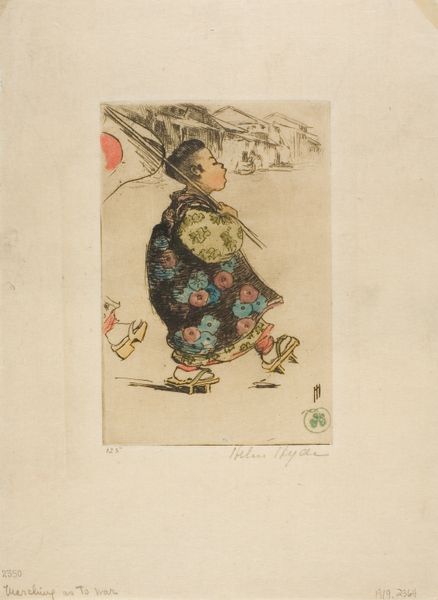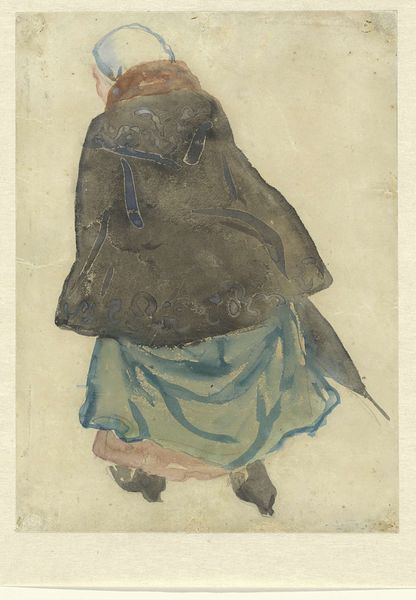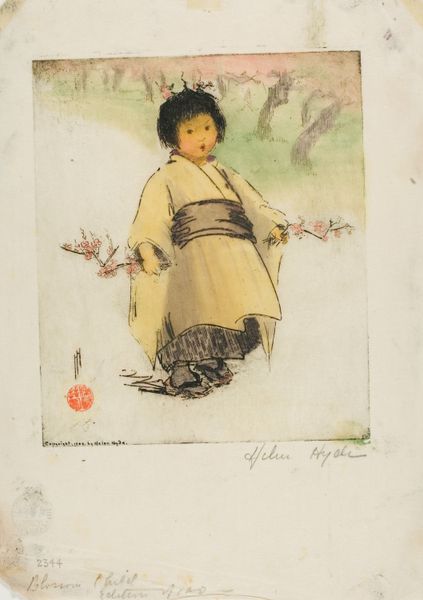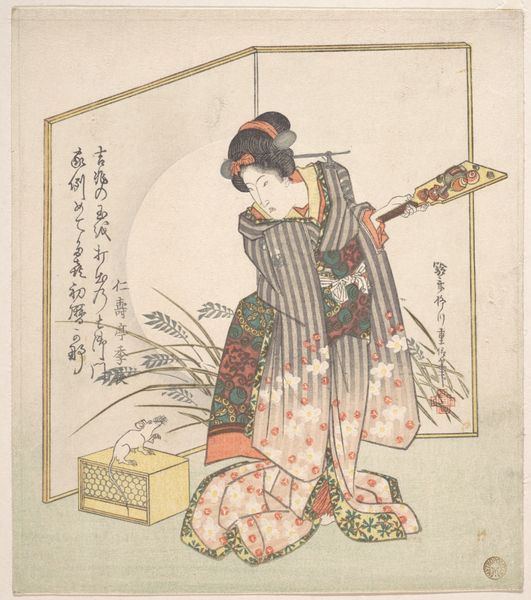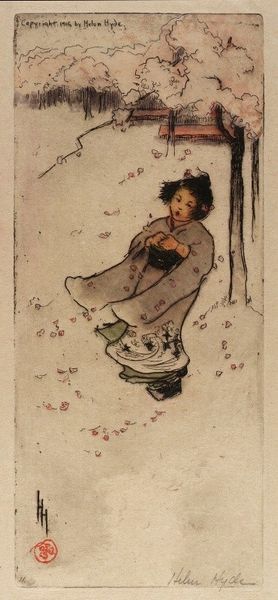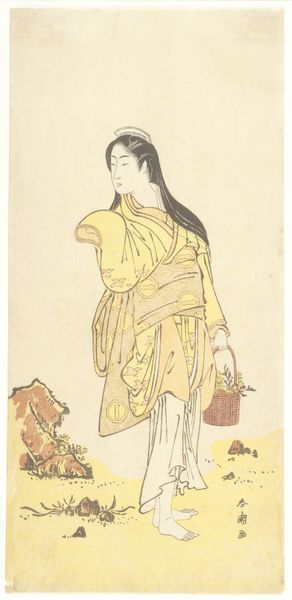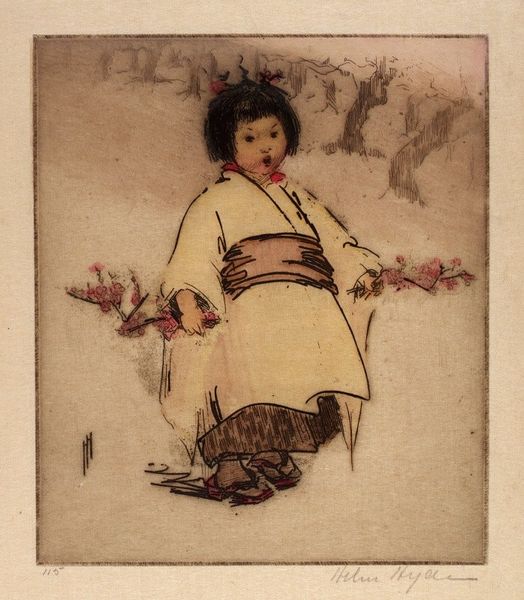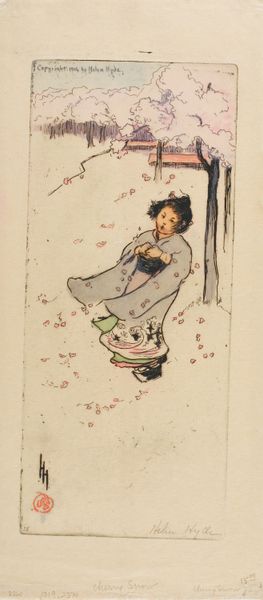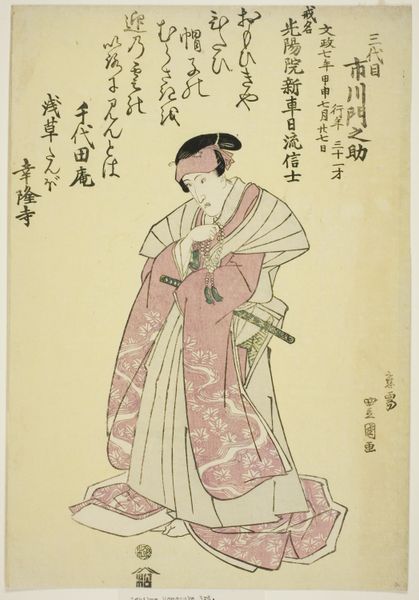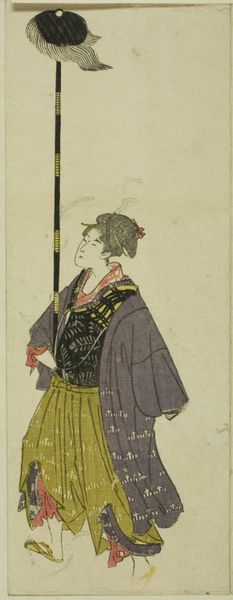
Dimensions: 125 × 72 mm (image/plate); 166 × 123 mm (sheet)
Copyright: Public Domain
Editor: Here we have Helen Hyde’s “Miss Plum Blossom,” an etching from 1897. It's an unassuming piece depicting a young Japanese girl in traditional dress. I find the color palette very soft and the composition very direct. What stands out to you? Curator: What I see is a window into a complex intersection of cultures and identities. Hyde was an American artist deeply influenced by Japanese Ukiyo-e prints, a style embraced by many Western artists in the late 19th century. But how do we grapple with this interest through the lens of Orientalism and its power dynamics? How does Hyde's gender as a female artist from the West further complicate the dynamic of cultural exchange? Editor: That's a good question, especially considering that the theme includes "ukiyo-e" along with orientalism. I never thought about that, how it isn’t simply a visual style. How much were artists like Hyde aware of these power dynamics, do you think? Curator: That's difficult to ascertain definitively. I think, though, we can safely argue it’s irresponsible to view such artwork without a critical perspective, acknowledging that the artistic vision, regardless of how admiring it seems to be, perpetuates an imbalance that reflects political realities of the time, such as colonialism. Consider also that Hyde was exceptional as a female printmaker at this time. Does her gender play into how we perceive her embrace of Japanese aesthetic? Editor: It’s true, the image isn't simply beautiful; it carries so many complex ideas about cultural exchange and power. I’ll never see “orientalism” the same way again! Curator: Exactly! Let’s use art as a platform for understanding, questioning, and advocating for a more equitable world.
Comments
No comments
Be the first to comment and join the conversation on the ultimate creative platform.
